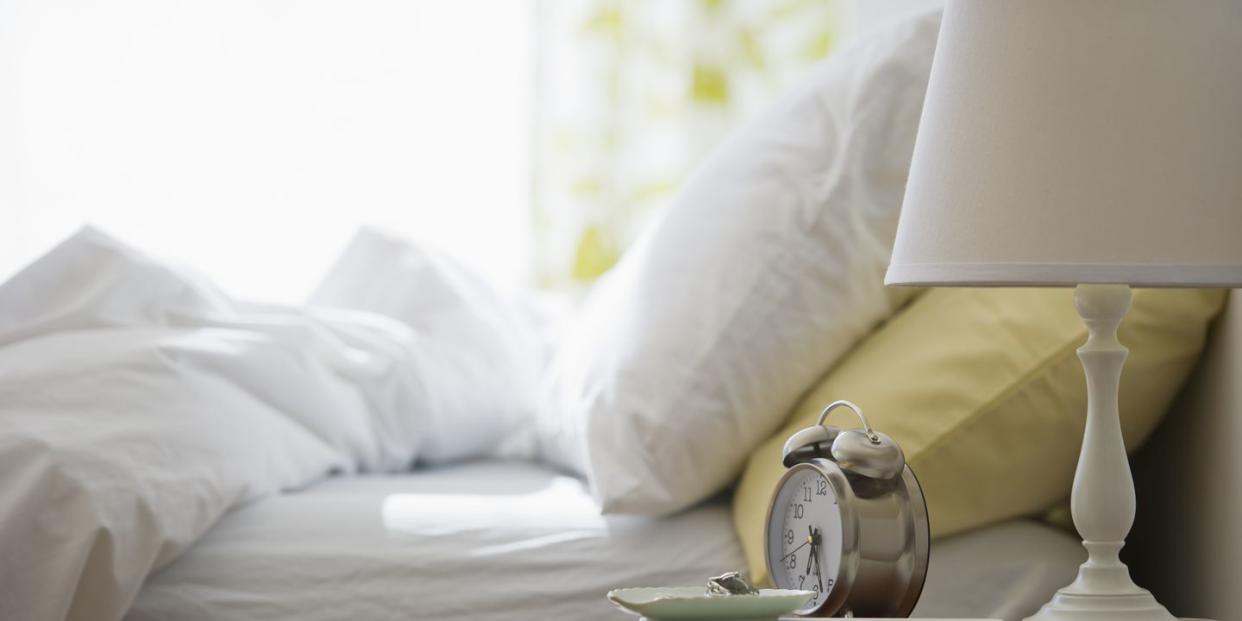How Often Should You Buy New Sheets?

The sheets you sleep on are a very personal household item. While you might make an effort to choose a fun pattern or color to match your bedroom design, at the end of the day, you likely chose your sheets for how nice they feel. But how long should you hold onto a set you really love? The answer may surprise you.
Sheets should be completely replaced after 2-3 years.
That might sound excessive, but there are several good reasons you should replace your sheets on a fairly regular basis. Think about how a shirt you wear often starts to look worn out. Visible signs of wear and tear (thinning, yellowing, fading) are the most obvious indicators your sheets are past their prime, but you might start to feel the decline as well, which can disrupt your oh-so-important sleep. We talked to Vicki Fulop, cofounder of Brooklinen, to understand what affects the lifespan of sheets before you even sleep on them, and got her best tips for extending the life of the sheets you love.
If you just realized you're long overdue for new sheets, consider these tips. Spoiler: Despite what you may have heard, a higher thread count doesn't automatically guarantee greatness.
Step One: Buy High-Quality Sheets
"Just like you have to consider the 4Cs of a diamond [color, cut, clarity, and carat], you have to consider thread count only after accounting for the quality of the cotton, the ply, and the type of weave," Vicki explains.
She recommends looking for sheets that are made with long-staple cotton to ensure a soft sheet that's also super durable. "Longer cotton fibers can be spun into stronger, finer yarns, and produce extremely smooth and supple weaves," she says.
Single-ply threads go hand-in-hand with long-staple cotton, meaning the threads going into your sheets are light but strong. Alternatively, "multi-ply yarns are a group of weaker fibers twisted together to create a false strength," Vicki says. 'They use mostly lower-grade, shorter-staple cottons, which result in thicker, coarser and heavier threads." These shorter, coarser threads are also more likely to poke out of the weave sooner, making them more susceptible to thinning.
This new jargon aside, regular old thread count is important with regards to quality. If you've never fully understood what thread count means, it's the number of threads woven together per square inch of fabric. The higher the thread count, the softer, denser, and warmer the fabric. However, you shouldn't be fooled by those 800-plus thread-count sheets. Vicki recommends sticking in the 200-500 range. "It generally maxes out around 500, as you can only fit so much thread in a square inch," she says.
Once you know you're shopping sheets that have the first qualities Vicki mentioned, the thread count you choose will really just determine the feel of the sheet. If you’re a hot sleeper, you might opt for a lower thread count for a crisp, cool sheet, like Brooklinen's percale sheets, which have a thread count of 270. Alternatively, their sateen sheets have a thread count of 480 and feel silkier.
Step Two: Take Good Care Of Them
While it is recommended you replace your sheets after a few years, there are several things you can do to extend the life of your sheets. Having at least two sets of sheets to cycle through will understandably extend the life of each set. Frequent washing wears your sheets out, but you can make a few changes to your laundry routine to help preserve your sheets.
Vicki recommends washing sheets on a cool or warm cycle, which helps to maintain the color and elasticity, and then line-drying them if possible. "If that’s not an option, a low tumble cycle in the dryer is better than high heat," she says. Finally, don't store your sheets in the plastic containers they may have come in, as those can cause yellowing. "Allow them some room to breathe!" Vicki says.
Follow House Beautiful on Instagram.
('You Might Also Like',)

